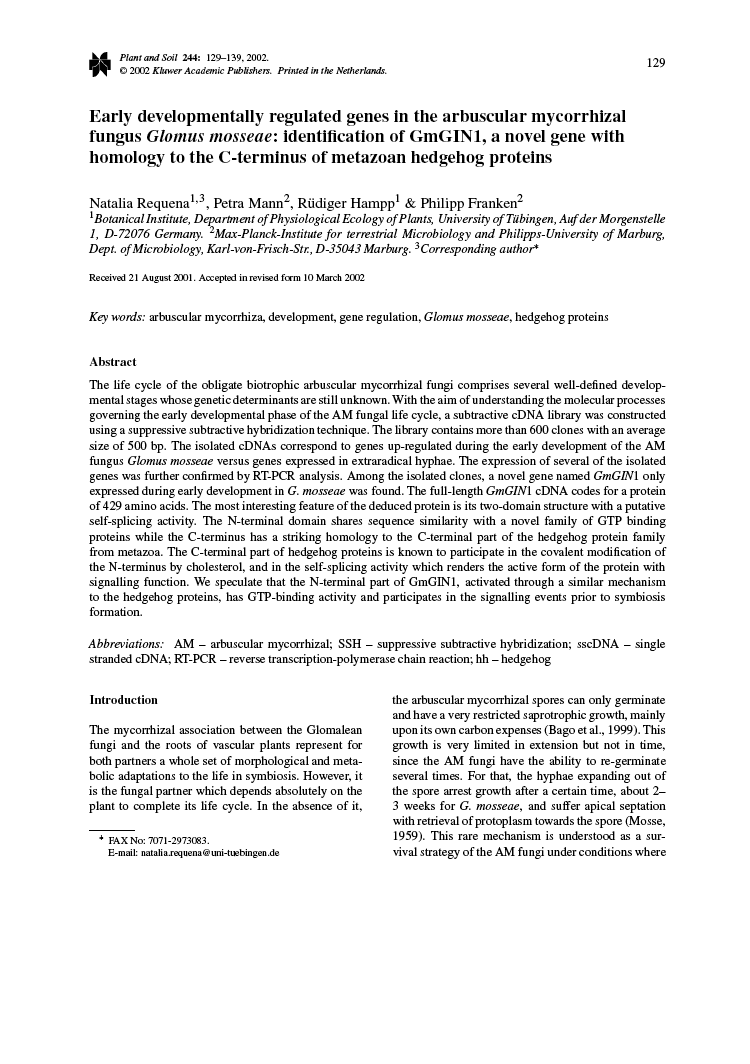Requena et al. 2002
Early developmentally regulated genes in the arbuscular mycorrhizal fungus Glomus mosseae: GmGIN1, a novel gene encoding a protein with homology to the C-terminus of metazoan hedgehog proteins. Plant Soil 244: 129-139.
Requena N., Mann P., Hampp and Franken P.
Abstract
The life cycle of the obligate biotrophic arbuscular mycorrhizal fungi comprises several well-defined developmental stages whose genetic determinants are still unknown.With the aim of understanding themolecular processes governing the early developmental phase of the AM fungal life cycle, a subtractive cDNA library was constructed using a suppressive subtractive hybridization technique. The library contains more than 600 clones with an average size of 500 bp. The isolated cDNAs correspond to genes up-regulated during the early development of the AM fungus Glomus mosseae versus genes expressed in extraradical hyphae. The expression of several of the isolated genes was further confirmed by RT-PCR analysis. Among the isolated clones, a novel gene named GmGIN1 only expressed during early development in G. mosseae was found. The full-length GmGIN1 cDNA codes for a protein of 429 amino acids. The most interesting feature of the deduced protein is its two-domain structure with a putative self-splicing activity. The N-terminal domain shares sequence similarity with a novel family of GTP binding proteins while the C-terminus has a striking homology to the C-terminal part of the hedgehog protein family from metazoa. The C-terminal part of hedgehog proteins is known to participate in the covalent modification of the N-terminus by cholesterol, and in the self-splicing activity which renders the active form of the protein with signalling function. We speculate that the N-terminal part of GmGIN1, activated through a similar mechanism to the hedgehog proteins, has GTP-binding activity and participates in the signalling events prior to symbiosis formation.

